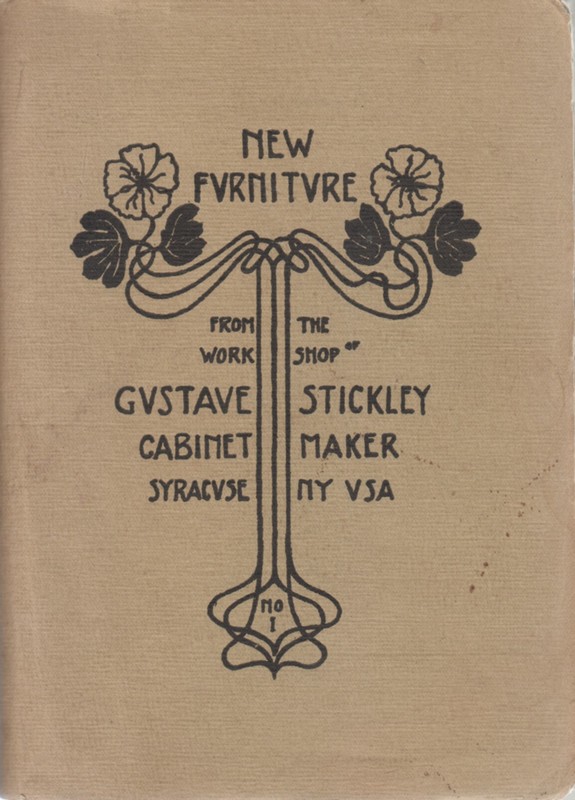In 1900, the Gustave Stickley Company issued its first catalog: New Furniture from the Workshop of Gustave Stickley. At times framed as a seismic shift, the moment that Stickley abandoned revival styles and embraced the aesthetic of the Arts and Crafts movement, research reveals this was a deliberate and complex transition. New Perspectives on the Workshop of Gustave Stickley investigates the early factory to shed new light on the workers and their environment.
As a catalog, New Furniture from the Workshop of Gustave Stickley, is rather humble, almost quaint. While its handmade quality is in keeping with the tenets of the Arts and Crafts movement, this was likely a concession to the practical conditions of its making, rather than a choice based solely on aesthetics. The twenty-four interior pages contain just seventy-one models, represented by a total of sixty photographs. The images are pasted to the pages, and some of these photos cover text that is essential. Some models give only the barest of dimensions, and a few–notably Piano Benches (nos. 159 and 160)–simply leave the dimensions blank altogether. The inconsistencies and lack of careful attention in the execution give the impression of something rushed.
Using the factory inventory from January 1901 to measure the impact of Stickley's new furniture in terms of his total production, what becomes clear is that the New Furniture catalog represented a new line of furniture, not an outright shift. Although the inventory shows more than 280 models in various states of production, more than 130 of these are models about which nothing is known.
What this case and the related online component aims to do is twofold. First, it seeks to allow viewers the opportunity to re-evaluate some long-standing assumptions about Stickley's productions, his factory, and even the dating of objects by looking more holistically at the available evidence. Taken in this manner, we begin to see Stickley's catalogs not as representing his total output when issued, but more as an additive process that featured his newest offerings. Second, the case serves as a preview for the exhibition "Things Wrought by the United Crafts: An Expression of Modern Life," which will explore these questions in greater detail. That exhibition will provide the first opportunity to see the Museum's twenty pieces of green ash furniture, a generous gift of Gregg and Monique Seibert. To honor and celebrate their philanthropy we wanted to exhibit the items with a new approach to scholarship on Stickley, and also to rethink the manner in which the Museum presented exhibitions. We are proud to announce that the Seibert gift will be on view in the North Cottage, another first for the Stickley Museum. "Things Wrought by the United Crafts: An Expression of Modern Life" opens May 30, 2020 and runs until January 3, 2021. We look forward to seeing you there.
Framed in the context of his productions and the broader arc of design history, New Furniture from the Workshop of Gustave Stickley was the start of a process of reorganization and renewal that began with designing this line for the Grand Rapids Furniture Exposition in 1900 and continued for the next four years. By January 1904, the factory inventory showed virtually no traces of his previous productions, and signaled the culmination of this shift as he phased out older forms to help cement his new aesthetic vision and identity.
Jonathan Clancy, PhD
Director of Collections and Preservation
